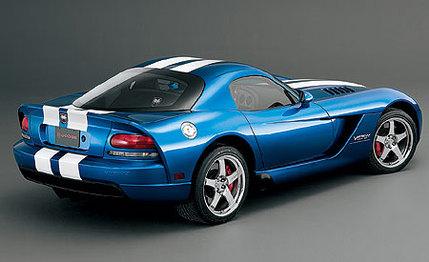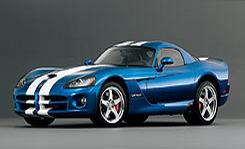 First Drive Review
First Drive Review
Sun-in-face and wind-in-hair have been celebrated as essential sports-car joys ever since we discarded the horse, but these joys do have limits. When wind-in-hair is occurring at velocities north of 100 mph, it gets to be more like hair-in-wind, as the strands attempt to separate themselves from the follicles. Our experiences with this phenomenon include a 1990 session in a Viper prototype with none other than Robert Lutz at the helm, hurtling down Arizona back roads at a buck-fifty while his passenger's hair stood resolutely vertical.
Chrysler was still an independent business entity at the time, Lutz was its president, and the Viper was his baby. In the afterglow of this ride, while Lutz was discussing the joys of barely sublight speeds with a member of the Arizona protect-and-serve, we reflected on the distinction between closed and open cars and concluded, again, that having a solid roof and side windows (the original Viper possessed neither) is a Good Thing, in the sense of hair retention (assuming you have hair), general comfort, and going fast. Okay, make that going faster. No one would characterize a Viper roadster as slow, but thanks to cleaner aero, coupes are almost invariably faster than roadsters of equal power, even when the roadster is operating with its top up.
And, in fact, when the tintop Viper-the GTS-arrived in 1996, its top speed did jump from 166 mph to 177, also aided by a 50-hp bump (from 400 to 450) and a 69-pound-lighter weight advantage.

But that was then. When the new hardtop rolls into showrooms in October—it will be called the SRT-10, replacing the GTS moniker—its aero advantage should be a single digit, 0.39 Cd versus 0.40. It's expected to weigh in about 15 pounds heavier than the softtop car, and output numbers for the pushrod aluminum V-10 engine will be unchanged. The kids in Chrysler's Street and Racing Technology (SRT) group felt that 500 horsepower and 525 pound-feet of torque were sufficient, even with the potent new 500-hp Corvette Z06 on the near horizon.
So what's new? Besides the roof, the sheetmetal from the doors rearward was obviously designed and fabricated for the coupe. There's commonality with the Competition coupe—the turnkey racing version introduced in mid-'03—but the rear end is unique to the street coupe. According to exterior designer Ralph Gilles, the objective was "to get some attitude into the car. The roadster has always been a little less edgy."
And the elements of edge are?
"We made the rear spoiler aggressive, the rear taillights are shrouded, the rear diffusers are integrated better, and we maintained the double-bubble roofline to accommodate people wearing helmets."
Helmet use suggests racetracks, where a good many Vipers spend a good many weekends, participating in club events such as lapping days and autocross competitions.
"That's one of the reasons we brought the coupe back," says Gilles. "There are some tracks that don't allow softtops or open cars."